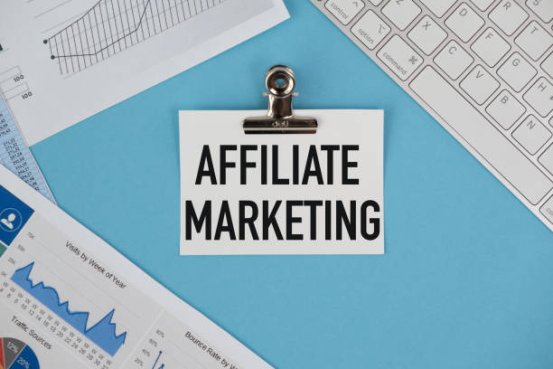Building an Effective Affiliate Marketing PR Campaign
Affiliate marketing PR is a powerful tool for UK brands to increase visibility, drive sales, and strengthen their digital presence. Combining affiliate partnerships with targeted public relations creates measurable results and long-term brand credibility.
Affiliate marketing PR is a powerful tool for UK brands to increase visibility, drive sales, and strengthen their digital presence. Combining affiliate partnerships with targeted public relations creates measurable results and long-term brand credibility.

Understanding Affiliate Marketing PR
Affiliate marketing PR merges the performance-driven goals of affiliate marketing with the reputation-building focus of public relations. In affiliate marketing, businesses collaborate with affiliates—individuals or organisations who promote products or services in exchange for a commission on resulting sales or leads. This approach offers a cost-effective way to broaden reach and track tangible outcomes.
Public relations complements this by shaping brand perception, generating media coverage, and building trust through compelling narratives. When integrated, affiliates may promote product launches while PR secures media or influencer coverage, amplifying credibility and overall impact.
Core Elements of Affiliate Marketing PR
1. Affiliate Recruitment & Partnership Building
Success depends on finding affiliates whose audiences and values align with your brand, including bloggers, niche experts, or social media influencers on platforms like Instagram and TikTok. Authentic recommendations resonate strongly with followers. Tools such as HubSpot’s free CRM can manage relationships and monitor performance, while TikTok’s high engagement offers unique opportunities for creative campaigns.
2. Content Creation & PR Integration
High-quality content is central to affiliate marketing PR. Affiliates should produce blogs, videos, posts, and reviews that reflect the brand’s voice, while PR ensures alignment with broader messaging. For example, a beauty brand could collaborate on a tutorial video while pitching the story to fashion media, increasing both credibility and exposure.
3. Paid Advertising as a Complement
Digital ads, such as PPC, can drive targeted traffic to affiliate content or campaign pages, enhancing conversions. Collaborating with PPC or B2B agencies ensures data-driven, cost-effective ad spend. Combined with affiliate efforts, paid media strengthens overall campaign performance.
4. SEO and Long-Term Discovery
Search engine optimisation supports ongoing visibility. Affiliates implementing SEO best practices, such as keyword targeting and backlinks, maintain consistent organic traffic. Partnering with an SEO agency ensures strategies remain competitive and comprehensive.
5. AI-Powered Campaign Enhancement
AI tools increasingly provide automation and insights for campaign optimisation. Predicting purchasing behaviour, assessing affiliate performance, and personalising content are key advantages. HubSpot’s AI features, for instance, help automate outreach and refine targeting for scalable results.
Advantages of Affiliate Marketing PR
1. Expanded Reach
Combining affiliate networks with media coverage allows brands to reach broader, relevant audiences. A fashion label promoted by a TikTok influencer and featured in an online magazine benefits from both reach and reinforced credibility.
2. Cost-Effective Growth
Affiliates are compensated for measurable outcomes, reducing risk compared with traditional advertising. PR adds earned coverage and organic engagement, further improving ROI.
3. Enhanced Trust & Authority
Endorsements from respected voices foster trust. Affiliates bring credibility through loyal audiences, while PR reinforces this via media placements and expert reviews. For instance, a tech company could benefit from a trusted reviewer partnership and industry media coverage.
4. Precision Targeting
Affiliate marketing PR enables highly tailored campaigns, whether targeting Gen Z on TikTok, professionals on LinkedIn, or niche communities, by strategically selecting affiliates and channels.
Comparing Strategies
Strategy | Cost | Effectiveness | Scalability | Best For |
Affiliate Marketing PR | Low–Medium | High for targeted campaigns | High | Visibility & conversions |
PPC Advertising | Medium–High | Immediate traffic | Medium | Short-term growth |
TV/Digital Signage | High | Moderate | Low | Local awareness |
SEO | Low–Medium | Long-term traffic | High | Organic discovery |
Social Media (TikTok) | Medium | High youth engagement | High | Brand interaction |
Step-by-Step Affiliate Marketing PR Plan
1. Set Clear Goals
Use SMART objectives to define aims, whether driving sales, increasing traffic, or boosting brand awareness.
2. Know Your Audience
Analyse demographics, interests, and behaviours to refine messaging, affiliate selection, and PR platforms.
3. Choose the Right Affiliates
Select creators aligned with your brand identity and use tracking tools for efficient management.
4. Create PR-Ready Assets
Provide affiliates with press releases, brand kits, visuals, and messaging guides for consistent, media-friendly content.
5. Leverage AI Tools
Automate outreach, enhance targeting, and track performance in real time for improved efficiency.
6. Track & Refine
Monitor metrics like CTR, conversions, and ROI, and make data-driven adjustments to optimise campaigns.
Conclusion
Affiliate marketing PR enables UK businesses to merge performance-driven sales with brand-building initiatives. Leveraging digital tools, PR resources, and carefully chosen partners allows brands to expand reach, enhance authority, and achieve sustainable ROI.
References
